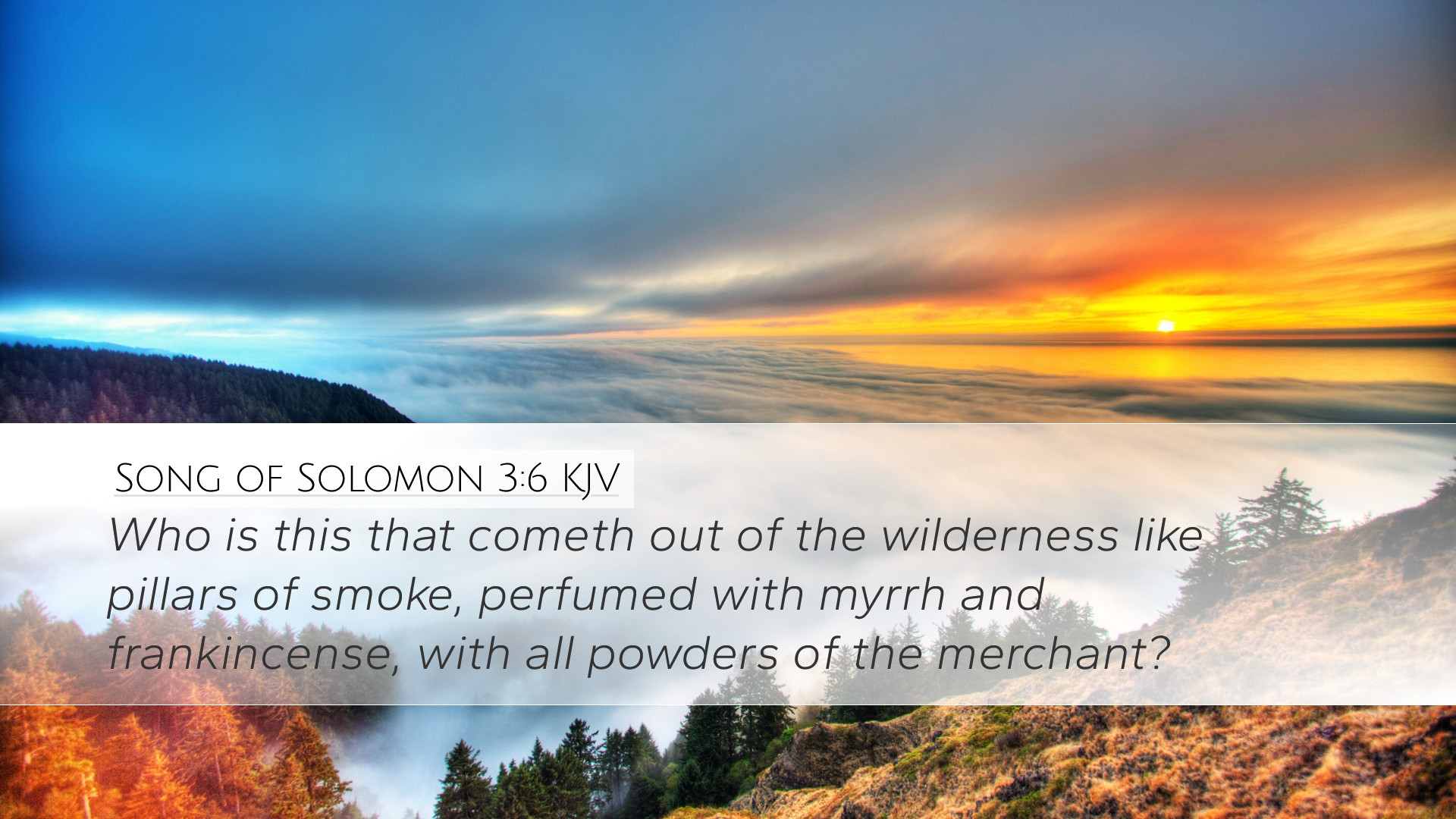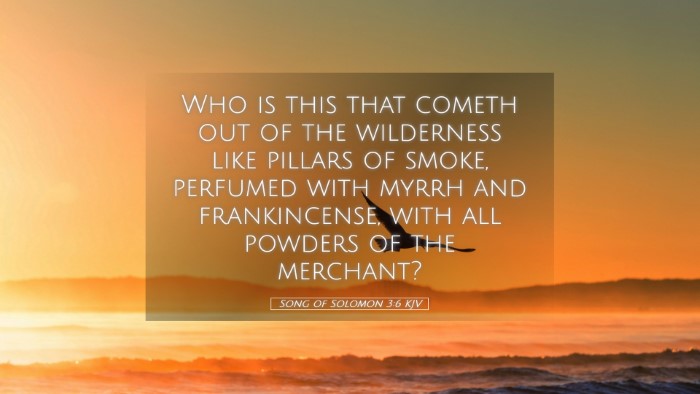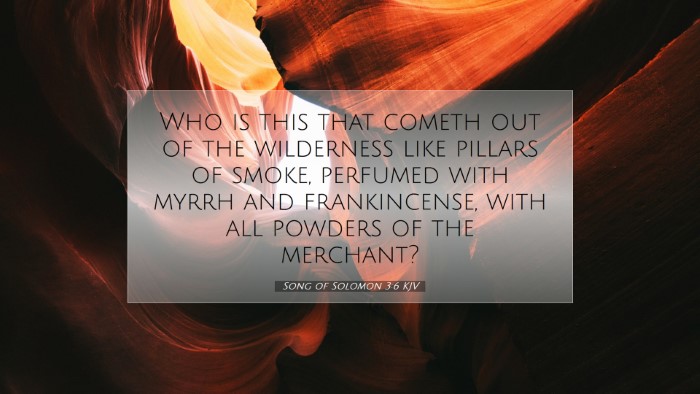Old Testament
Genesis Exodus Leviticus Numbers Deuteronomy Joshua Judges Ruth 1 Samuel 2 Samuel 1 Kings 2 Kings 1 Chronicles 2 Chronicles Ezra Nehemiah Esther Job Psalms Proverbs Ecclesiastes Song of Solomon Isaiah Jeremiah Lamentations Ezekiel Daniel Hosea Joel Amos Obadiah Jonah Micah Nahum Habakkuk Zephaniah Haggai Zechariah MalachiSong of Solomon 3:6
Song of Solomon 3:6 KJV
Who is this that cometh out of the wilderness like pillars of smoke, perfumed with myrrh and frankincense, with all powders of the merchant?
Song of Solomon 3:6 Bible Commentary
Commentary on Song of Solomon 3:6
Verse Reference: Song of Solomon 3:6 - "Who is this that cometh out of the wilderness like pillars of smoke, perfumed with myrrh and frankincense, with all powders of the merchant?"
Contextual Overview
The Song of Solomon, attributed to King Solomon, is a poetic exploration of love, beauty, and desire, often interpreted as an allegory of the relationship between Christ and His Church. The passage under consideration, Song of Solomon 3:6, depicts a figure emerging from the wilderness, an image rich in metaphorical significance.
Interpretation and Analysis
1. The Figure Coming Out of the Wilderness
In biblical literature, wilderness often symbolizes both desolation and a journey towards renewal or revelation. Matthew Henry notes that this figure represents the bridegroom or the beloved, reflecting both beauty and majesty as he emerges from a place traditionally associated with hardship.
2. Visual Imagery
The phrase "like pillars of smoke" evokes an image of grandeur and ethereality. Albert Barnes elaborates that this imagery illustrates the way the beloved appears—mysterious yet captivating. The "smoke" could symbolize the presence of God, reminiscent of the cloud that filled the temple or guided the Israelites through the desert (Exodus 40:34-38).
3. Perfumed with Myrrh and Frankincense
These specific fragrances have profound implications. Myrrh has traditionally been associated with suffering and burial, while frankincense denotes divinity and the worship of God. Adam Clarke indicates that the use of these spices suggests a deep connection to both the earthly and the divine, highlighting the dual nature of love—both its beauty and the sacrifices often required.
Symbolism of Scents
The perfumed nature of the beloved reflects the grace and richness found in a loving relationship. The mention of "all powders of the merchant" gives an impression of abundance and luxury, portraying love as something valuable and precious. This alludes to the wealth of the beloved's character, suggesting that love is not only a feeling but a treasure to be cherished.
Theological Insights
1. Christ as the Beloved
Theologically, this passage has been interpreted within the framework of Christology. As the Bridegroom, Christ emerges from the wilderness of humanity to present Himself to His Church. Matthew Henry's commentary draws parallels between the beloved's journey and Christ’s own earthly ministry, characterized by sacrifice and love, permeated by an aroma of grace.
2. The Church's Journey
Conversely, this figure can also symbolize the Church, emerging from trials (the wilderness) refined and filled with a fragrant testimony of faith. This perspective emphasizes the collective experience of believers as they grow through challenges, emerging stronger and more fragrant in their devotion to God.
Application for Believers
For pastoral application, this verse serves as a reminder of the call to recognize the beauty of Christ in our lives and the transformative journey of faith. In times of trial, believers are encouraged to look for Christ’s presence and the grace that sustains them, knowing that each experience can enhance their testimony.
Reflections on Love
This verse also serves as a profound meditation on love itself—its complexities, its sacrifices, and ultimately, its triumphs. The call to love as exemplified in Christ invites pastors, theologians, and faithful individuals to consider the integral role of love in ministry, relationships, and community life.
Conclusion
In conclusion, Song of Solomon 3:6 encapsulates a rich tapestry of imagery and meaning that invites deep reflection on love, beauty, and the divine. Through the insights gathered from renowned public domain commentators, we discern layers of significance that resonate with our faith journey. Whether considering this from a theological, pastoral, or scholarly lens, the verse challenges us to appreciate the depth of love that flows through the narrative of Scripture and encourages us to embody that love in our own lives.


